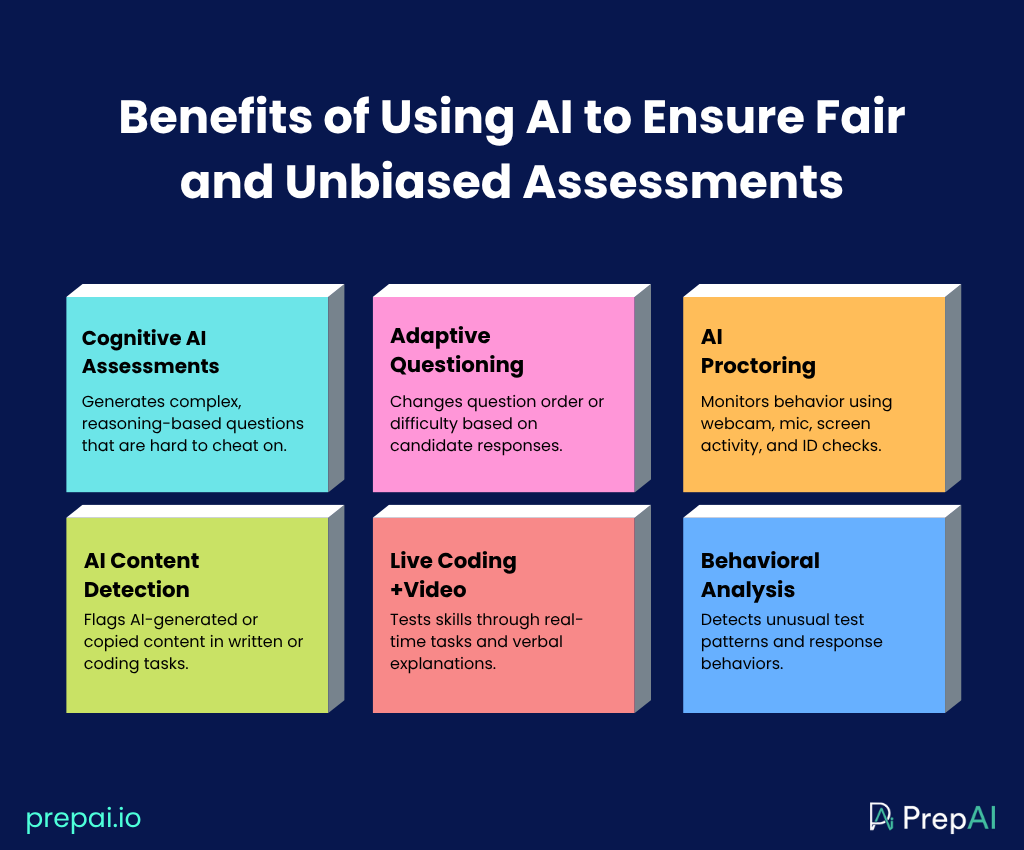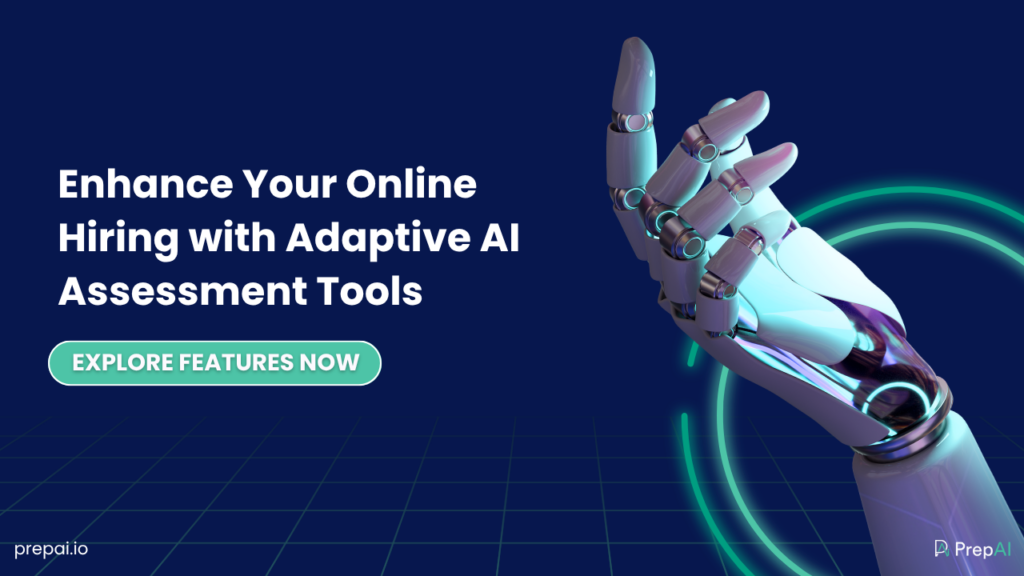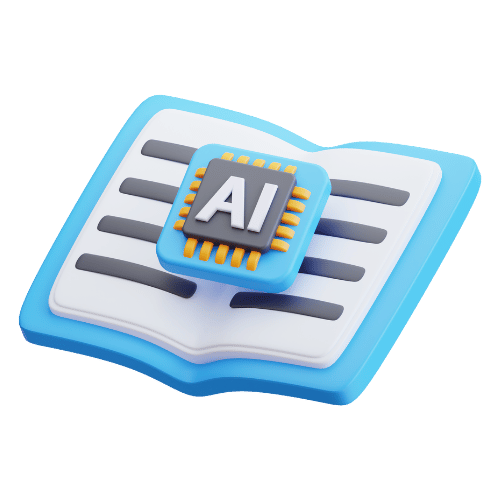Artificial intelligence has made cheating easier, but it is also a powerful tool for detecting and preventing such activities. Here, we’ll discuss how candidates cheat and ways to use AI tools to prevent cheating in recruitment exams and interviews.
Recruitment is a cost-intensive and time-consuming process. Statistics show that it takes an average of 44 days to fill a job or role. Moreover, 72% of employers face difficulties in finding qualified candidates.
Many businesses have begun investing in AI and other technologies to reduce costs and expedite the hiring process. Almost 80% of recruiters use AI tools for screening, while 37% companies have introduced chatbots into the process.
However, this led to other complications like cheating. With online tests and interviews, some candidates have been using unethical means to clear the rounds and get hired by organizations. Even if you take legal action later, you have already lost precious time and resources and have to restart the hiring process.
Artificial intelligence has become a double-edged sword. Since candidates use it in different ways to cheat on exams during recruitment, organizations can use it to prevent cheating and hire the right candidates for the job.
Let’s read more about how AI tools can help prevent cheating in recruitment.
How to Cheat on an Online Test
To know how we can stop cheating in exams, we should first know how candidates use unethical means in recruitment exams. Here are a few examples:

Using Generative AI
There’s no denying the advantages of genAI. However, it has become an easy tool for people to cheat in exams, assignments, etc. In fact, genAI is one of the best ways to cheat on an exam these days. Candidates copy-paste the questions to tools like ChatGPT or Gemini and use the results as answers. They use content generators or automated code generators to create written responses for questions in real-time.
Proxy Testing and Whisper Bots
Remote access software allows others to attempt the exams on behalf of the candidates. This can happen despite ID verification. Another way is the use of voice assistants, where candidates can ask the question aloud without switching between screens. They can scan the question to find the answer online if you disable right-click on the browser. A whisper bot listens to the interviewer’s questions through the earpiece and whispers the answers in the candidate’s ear.
Deepfake Lip-Sync and Synthetic Speech
Deepfake has made it easy to fake many things. It can create real-time overlays where candidates can use earlier videos to submit their responses to the interview questions, or by partially disguising their faces. Synthetic speech tools help candidates answer questions confidently, even if they don’t know about the subject.
To prevent cheating, organizations have to consider all possible ways in which a candidate is likely to cheat during recruitment and counter them effectively using different means.
How to Stop Cheating on Tests Using AI
It won’t be surprising to note that ‘how to cheat in a test’ is among the widely searched questions on the internet. That’s why you need to be creative and innovative in conducting recruitment tests and interviews. Artificial intelligence is helpful to prevent cheating when you implement it with a proper strategy.
AI-Powered Cognitive Ability Test
Instead of conducting regular aptitude tests or using questions that assess the memory and retention abilities of the candidate, create exams that evaluate the higher-order thinking skills. Tools like PrepAI are powered by NLP (natural language processing) algorithms and supported by Bloom’s taxonomy framework, are effective in generating HOTS questions to test the cognitive abilities of the candidates. There is no right or wrong answer for open-ended HOTS questions, making it difficult for candidates to cheat in the exams.
Adaptive Questioning
Adaptive questioning can be implemented in many ways. One method is to randomize the question sequence for each candidate so that they cannot share the answers or copy them. This can be automated if you use question generator tools. A more effective way to conduct adaptive tests is to set up mental ability tests where the next question’s complexity depends on how the candidate answered the current question. For example, if the candidate solves an easy question, the next one will have medium-level difficulty. If they solve that, the question afterward will have high-level difficulty, and so on.
AI-Powered Proctoring and Monitoring
You cannot avoid proctoring and anti-cheating tools. AI-powered proctoring software ensures test integrity to a good extent. Consider various factors like browser locking, disabling copy-paste and right clicks, setting up ID verification, installing a 360-degree camera with a built-in microphone to monitor the candidate throughout the exam and interview, etc. You can also use keystroke and typing pattern analysis to compare their real-time behaviour with the results from resume analysis.
AI Text/ Code Detector Tools
If candidates can use AI to generate content, you can use the same technology to detect such content and disqualify them. Many AI tools can detect content ‘written’ by genAI. This can be done to test the code submitted by the candidates during technical assessments. Though AI detectors are not 100% accurate and reliable, you can get an idea of whether the three tools provide similar results. Moreover, the content written by AI tends to be fluffy and has little value.
Live Coding with Video Responses
Another way to prevent cheating in functional assessment tests is by asking the candidates to attempt the answers live in real-time during video interviews. For example, if you want to hire a programmer, ask them to write code for a given scenario and explain their coding process, the structure, the output, the potential errors, etc. This shows if the candidate has truly written the code or if they generated it. Human involvement combined with AI anti-cheating tools will give you the best results to prevent cheating during recruitment.
Behavioral AI for Detecting Anomalies
Artificial intelligence is great for detecting patterns. Use it to your advantage by analyzing the test-taking patterns of candidates. For example, you can invest in technology that tracks eye movement to determine if the candidate is looking at another screen or if they are often staring away from the screen. Similarly, AI behavioral analysis compares their test-taking patterns to normal patterns. Anomalies here will be highlighted. If a candidate solves a complex question in a quick time (compared to the average time taken for the same question) but spends longer on a relatively simple question, it is an anomaly. While such instances can occur at times, if the pattern repeats for all complex questions, it indicates a high chance of cheating.There are other ways to prevent cheating in recruitment, such as focusing on traits that cannot be faked by AI and replacing free-form assessments with structured tests. Be transparent about your AI and ethical policies and what it would mean if a candidate were caught cheating.

Final Words
AI tools, as well as a well-thought-out anti-cheating framework, are required to prevent candidates from cheating in recruitment. At the same time, you should be clear about what constitutes cheating, since some see the use of AI as a means to polish or fine-tune their resumes or answers.
Apart from implementing AI tools, you should focus on creating customizable, adaptive, and dynamic assessments to measure the cognitive, behavioural, and technical abilities of the candidates. Develop a comprehensive and robust recruitment process that can be scaled and adjusted as necessary.



